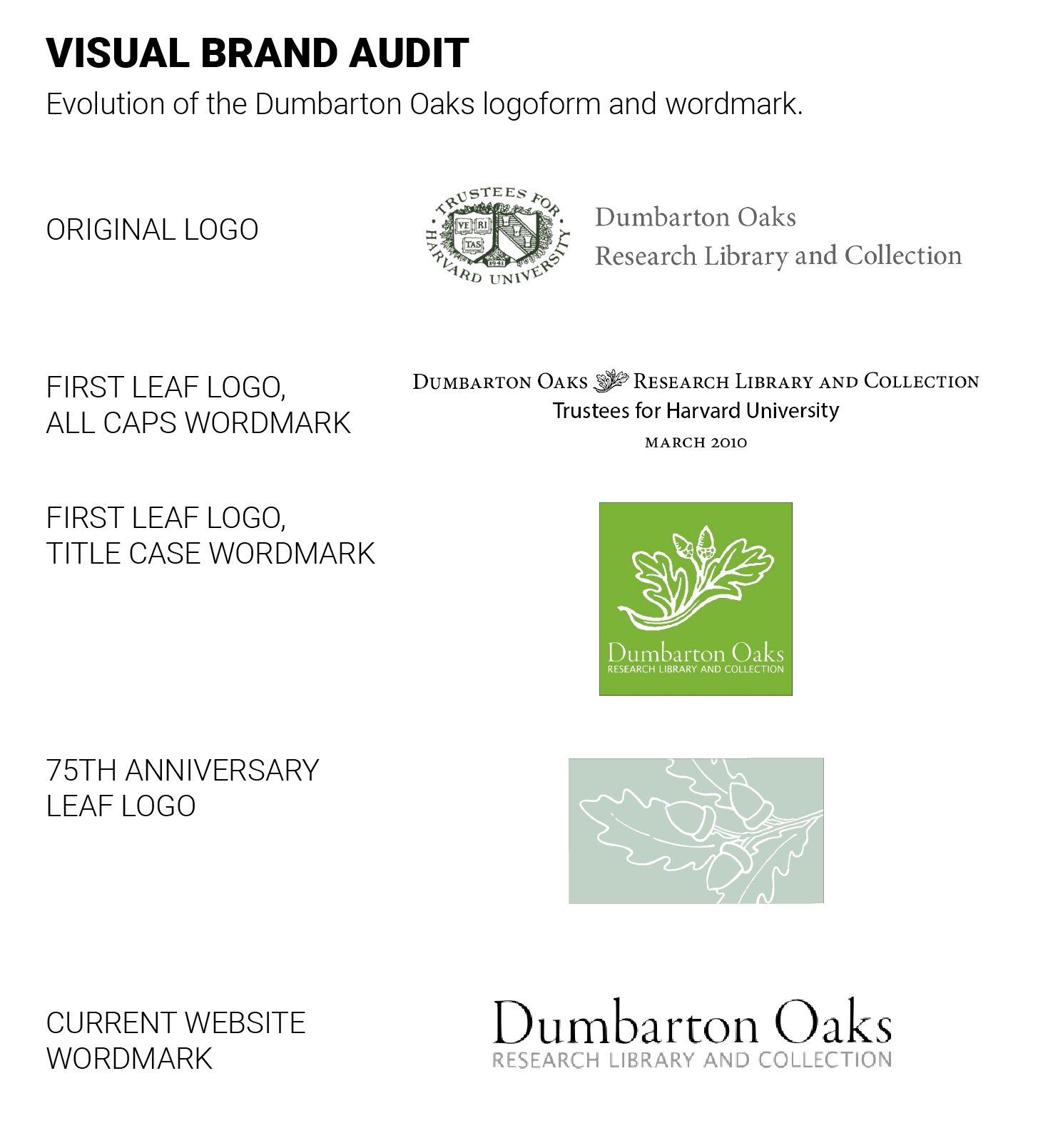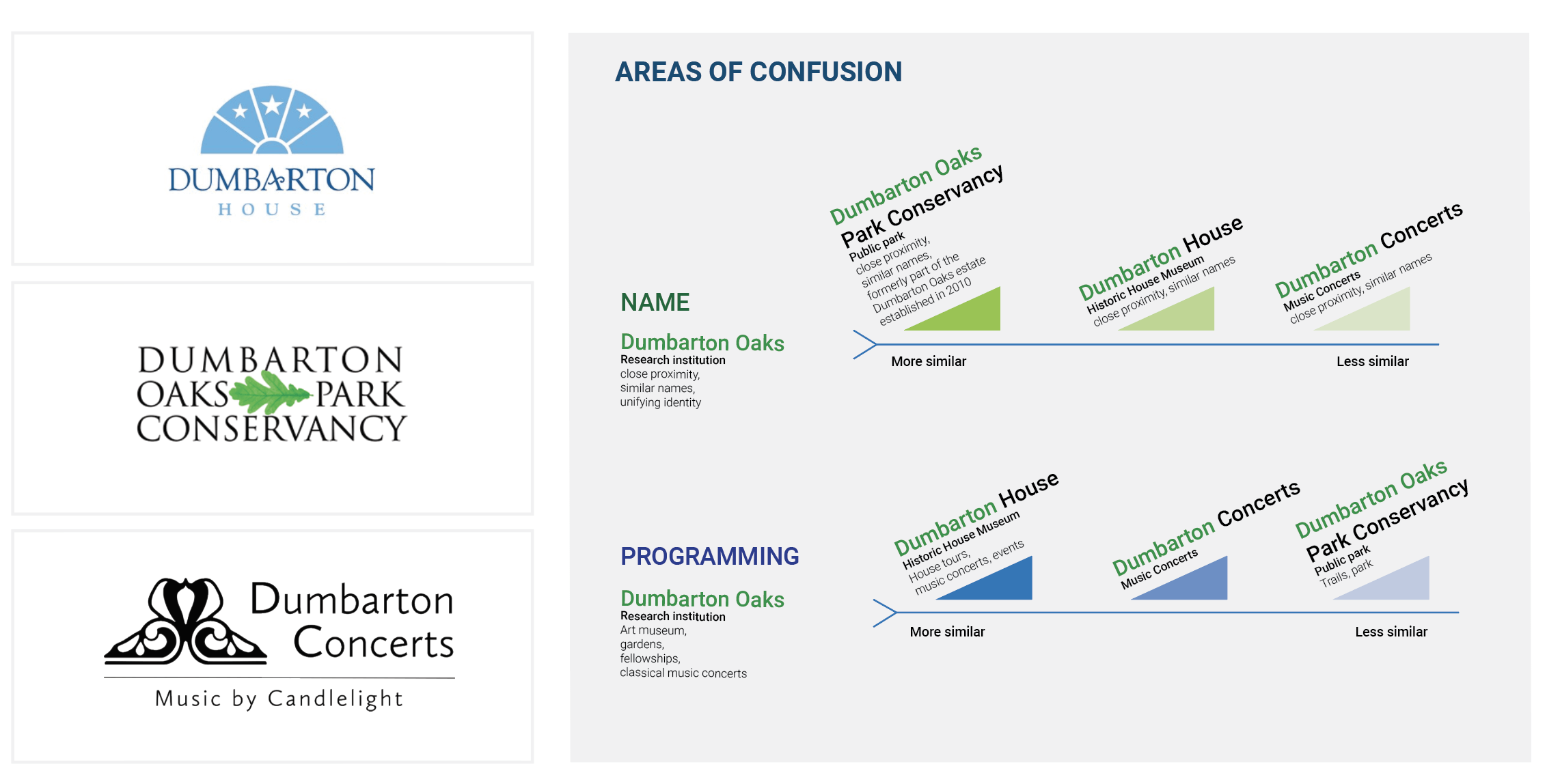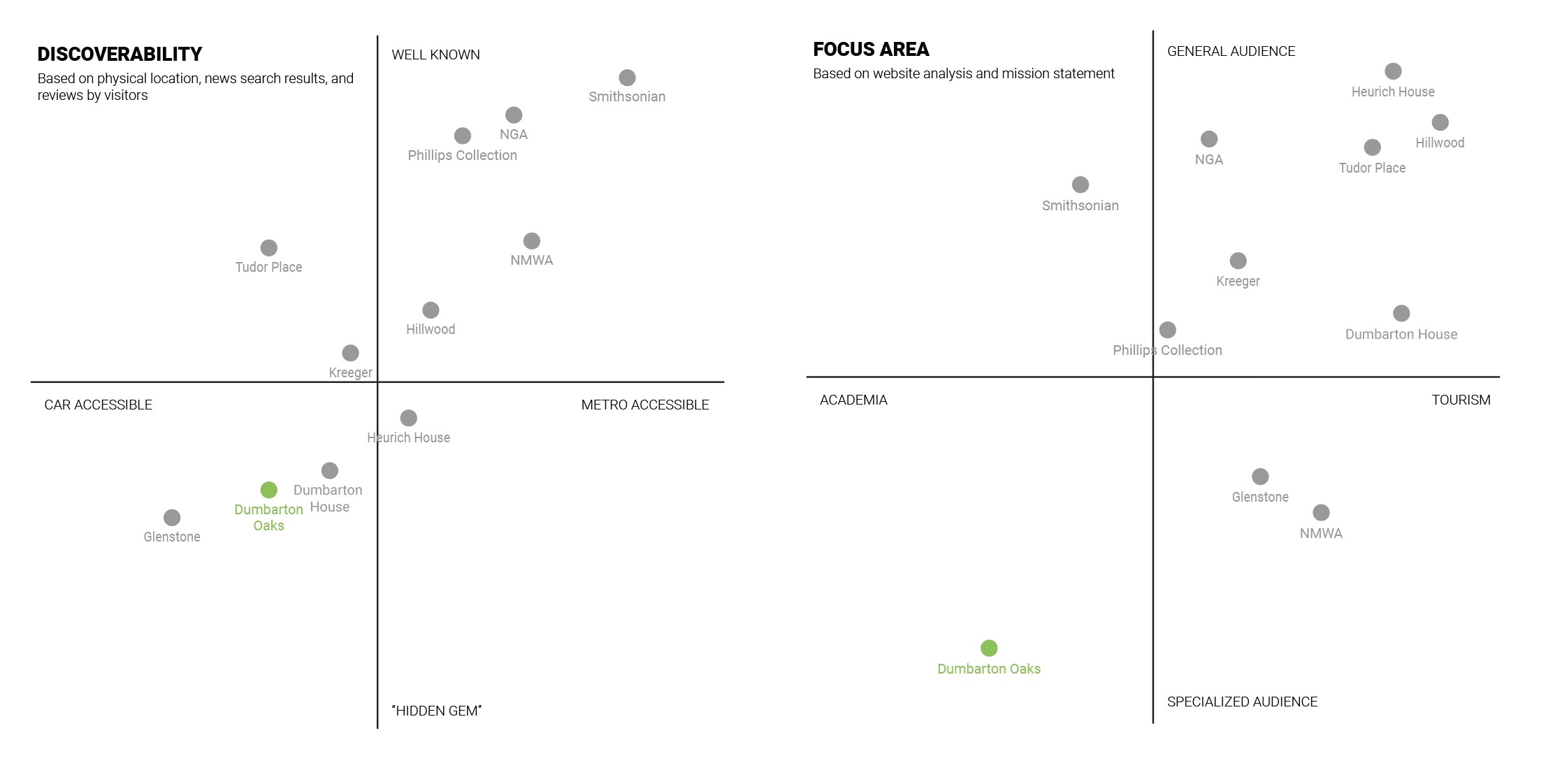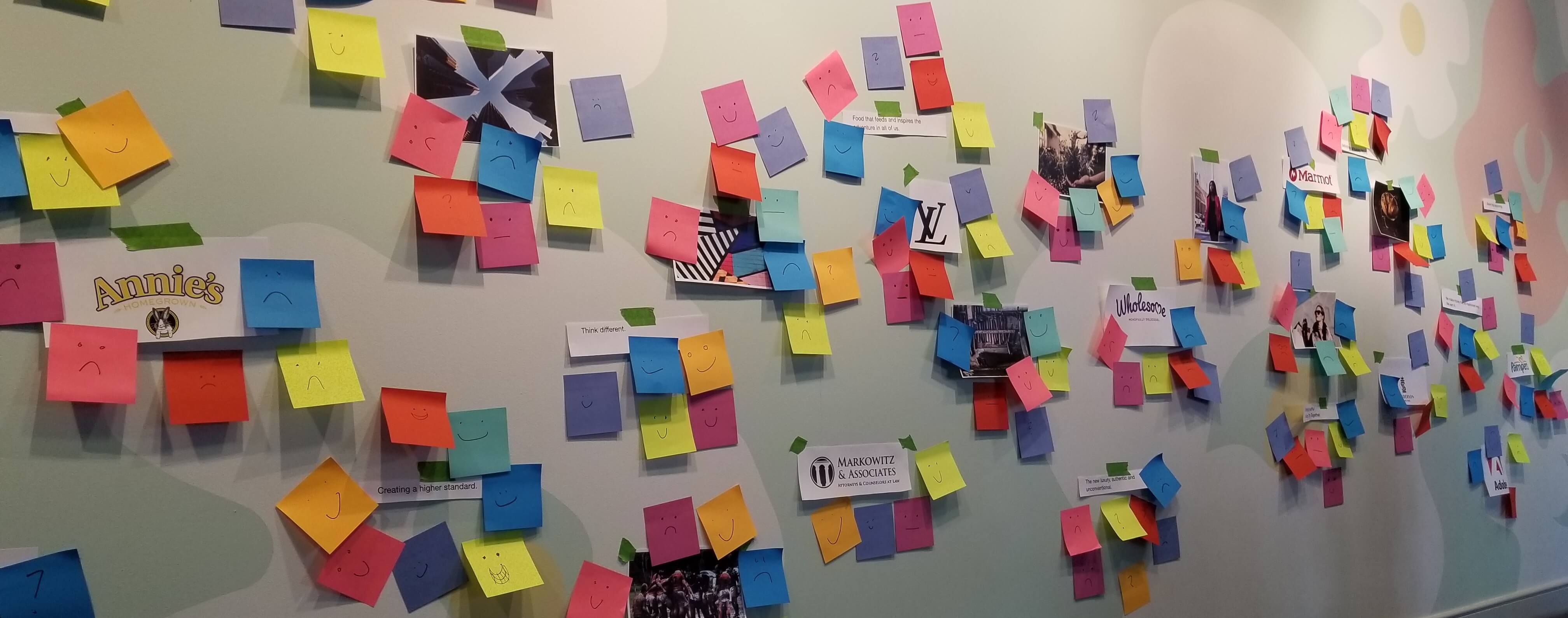
Dumbarton Oaks Brand Workshop
Using data analysis and co-creation workshop techniques to break down barriers between an outside consultant and an 85 year old institution.
Timeline
4 weeks
Methods
Mixed methods, qualitative + quantitative
Context
Founded in 1940, Dumbarton Oaks was a long-standing research institute, library, event space, museum and garden in Washington, DC that needed help modernizing their brand to draw in a new generation of visitors. For decades, their brand was as diverse as the departments within the institution, drawing upon a common theme of an oak leaf with several variations on font and style.
We don’t have a style that we stuck to. [...] The way we do the logo, with Dumbarton Oaks in all caps, again, at some point, that’s what we came up with and that’s what we stuck with.
Stakeholder

As the researcher for this project, the challenge I rose to was to use data-driven and collaborative workshop techniques in order to bring together differing viewpoints and opinions across the organization to support a brand direction that would be as timeless as the institution’s mission.
Research phase
Knowing that my stakeholders were predominantly researchers themselves, I knew it was vital to go above and beyond in the data collection and analysis portion of the project. I employed several different methods to build my initial discovery report that would serve as inputs to the collaborative workshop later on — surveys and interviews with staff, review of online and in-person visitor metrics, first-party and third-party documentation reviews, collecting and analyzing online reviews, and even so far as to interview random museum-goers at the National Mall.


By incorporating several different types of data points, qualitative and quantitative, I was able to paint a full picture of where the institution’s brand sat in today’s museum landscape and where its greatest opportunities lie based on their competitors and trends in design and technology. After distributing the report, it was clear that having a strong, data-backed foundation gave my stakeholders immense confidence in the overall approach to this rebranding effort, making the next step much easier to implement.
Workshop phase
The real challenge with us, as with many cultural organizations opening up to a wider more diverse audience, is to keep our former and our traditional constituencies happy and continuing to feel welcome as we open the door to new groups. So that’s often a balance of traditional and innovative.
Stakeholder
The second step to the rebrand effort was a collaborative brand voice exploration workshop to allow all stakeholders across the organization to feel involved in the future direction of the Dumbarton Oaks brand. Eight participants from six different departments were invited to a 1-day session where we sorted, defined, and voted on various ephemera that represented the different axes of a brand voice, based on Aacker’s brand personalities framework.

At first, many participants were nervous and hesitant to speak up, afraid they would offend or say something unintelligent. But after some warm-up exercises and friendly banter, the room opened up and all participants were eagerly sharing insights and building upon each others’ opinions that got to the heart of what Dumbarton Oaks meant to them. At the end of the day, we came up with a solid direction for the design phase of the rebranding project that everyone felt confident in, and we reinforced a positive working relationship with our client across the board.